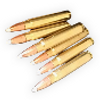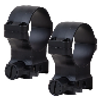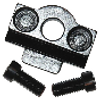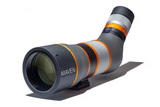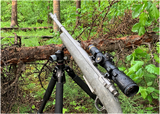I inhaled a deep breath of pine-tinged air as my little mountain horse. Sweet carried me deeper into the wilderness. The sun warmed my shoulders as I listened for the rocks the pack string was kicking up behind us; I sighed and slid deeper into my saddle. Our goal was still hours away, there were storm clouds building to the west and a glance at my watch told me weren’t going to make camp before dark. A long day in the saddle but I was hoping a rendezvous with a mature bull elk the next day would be my reward for the copious amount of trail time.

We crested a pass and slowly switch-backed our way down to the creek below, still running hard with backcountry snowmelt. I knew I had to take it slow as each pack animal needed to pick their own way through the cobbly bottom to not break the string apart mid-crossing. Sweet had other ideas though and as I looked back to check the stock one last time before we hit the water, I could feel her muscles contract, bunch and explode up and across the creek. Muscle memory took over as I gave the packstring’s lead rope slack and gripped with my knees for the impromptu bronc ride. My rifle, tucked away in a scabbard under my left knee, caught air as we reached the zenith of our arc and slammed back down as hooves met earth. My knee smarted the rest of the trip and I knew I was going to have to check my zero again before any hunting took place.

Fortunately, I had followed Morris’ guidance when I’d mounted my scope to the rifle and a couple of shots confirmed the zero had held true. Read on for his protocol to ensure a rock-solid marriage between firearm and optic.
Tools Needed:
- Torque Wrench ($35.00-80.00)
- Scope Levels ($7.00-30.00)
- Liquid Electrical Tape ($10.00)
- Thread Locker ($6.00-9.00)
- Mount bases to the receiver following the manufacturers specified inch-pounds measurement, a dab of thread locker will ensure they don’t back out once torqued. If they’re one-piece rings, you’re ready for step two, otherwise affix the scope mounts to the bases following the manufacturer's instructions.
- Apply a small amount (roughly the size of a pea) of liquid tape on the lower half of the rings, brush evenly and set the scope in. Gently rock the scope back and forth to ensure a uniform layer of tape.
- Put the same amount of tape in the top half of the rings and set them onto the scope. Repeat the rocking motion and start the screws by hand.
- Set the scope levels and begin to tighten with the torque wrench (manufacturers specs), once tight and level, simply wipe up the tape that pressed out of the sides of the rings. Nail polish remover can help clean up any stubborn smears.

Any number of unfortunate instances can lead to scope issues in the field, negatively impacting a hunt for hours or days depending on the circumstances. It’s imperative hunters take the time to put the odds in their favor at every opportunity beforehand, as it may have a direct impact on the outcome of a hunt at some point.
Having a quality optic on a trustworthy firearm is key, marrying the two together properly ensures a hunter’s investments are utilized and protected. Who wants to spend time and money only to have Murphy’s Law handicap the adventure of a lifetime? By utilizing quality rings, bases and proper mounting techniques, a hunter can ensure they’re ready for whatever the upcoming days afield throw at them.





